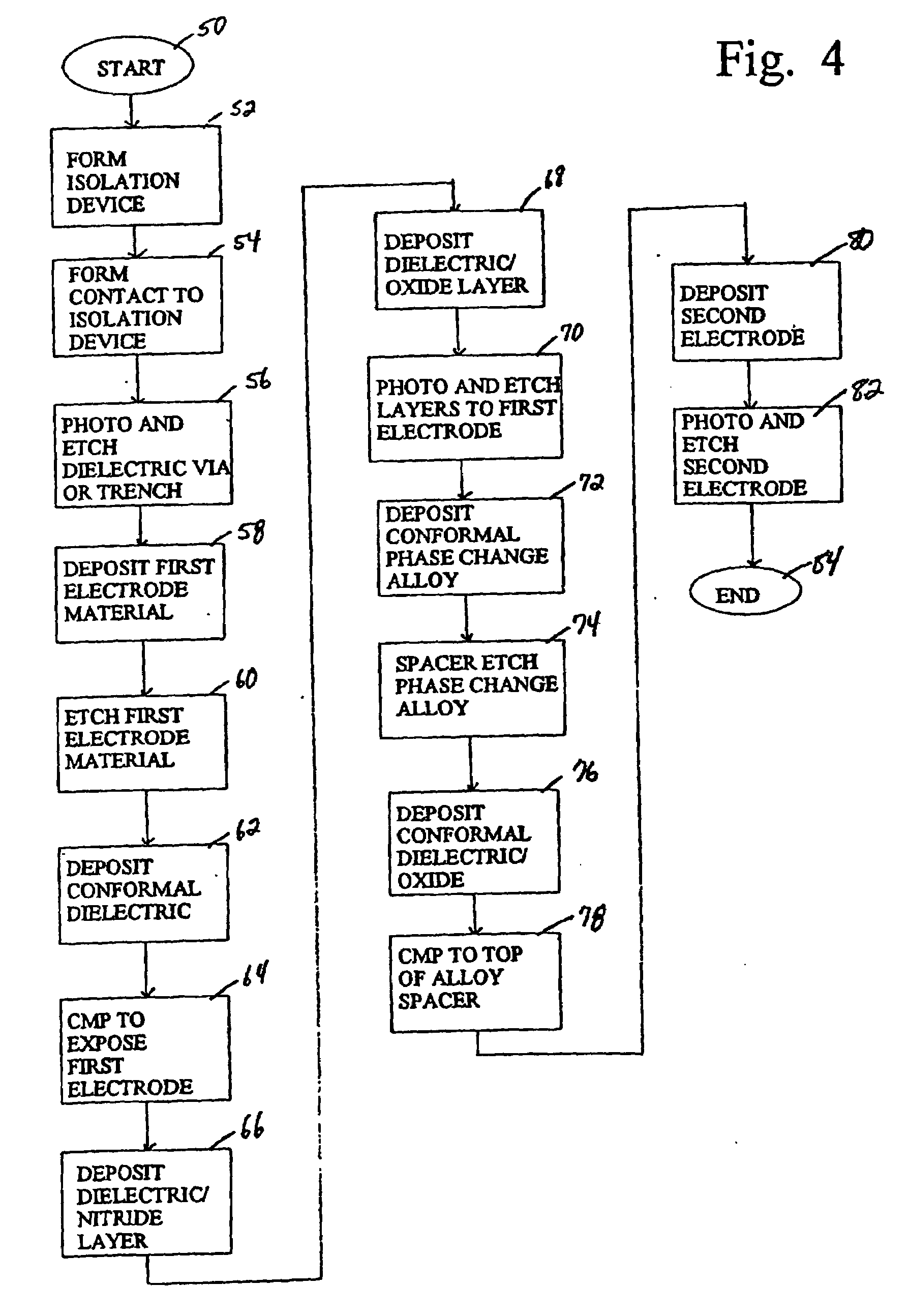Programmable resistance memory element and method for making same
a memory element and resistance technology, applied in the field of memory elements, can solve the problems of limited direct and universal replacement use of memory elements, high energy requirements needed to program the resistance of memory elements, and inconsequential power saving, and achieve the effect of reducing the energy requirements for the programming of elements
- Summary
- Abstract
- Description
- Claims
- Application Information
AI Technical Summary
Benefits of technology
Problems solved by technology
Method used
Image
Examples
Embodiment Construction
[0025]Programmable resistance memory elements comprise a volume of phase-change memory material that is programmable between at least a first resistance state and a second resistance state in response to programming electrical signals, such as currents, of different amplitudes and durations. Memory material programmable to two resistance states means that the associated memory element is capable of storing a single bit of information, either a logic 0 or a logic 1, for example. In another embodiment, the memory material is programmable to at least three resistance states so that each of the memory elements is capable of storing more than one bit of information. For example, memory material programmable to at least four resistance states makes a memory element capable of storing at least two bits of information. Each of the resistance states resulting from a programming electrical signal is assigned a value, such as logic 0 or logic 1 where two resistive states exist. Another electri...
PUM
 Login to View More
Login to View More Abstract
Description
Claims
Application Information
 Login to View More
Login to View More - R&D
- Intellectual Property
- Life Sciences
- Materials
- Tech Scout
- Unparalleled Data Quality
- Higher Quality Content
- 60% Fewer Hallucinations
Browse by: Latest US Patents, China's latest patents, Technical Efficacy Thesaurus, Application Domain, Technology Topic, Popular Technical Reports.
© 2025 PatSnap. All rights reserved.Legal|Privacy policy|Modern Slavery Act Transparency Statement|Sitemap|About US| Contact US: help@patsnap.com



